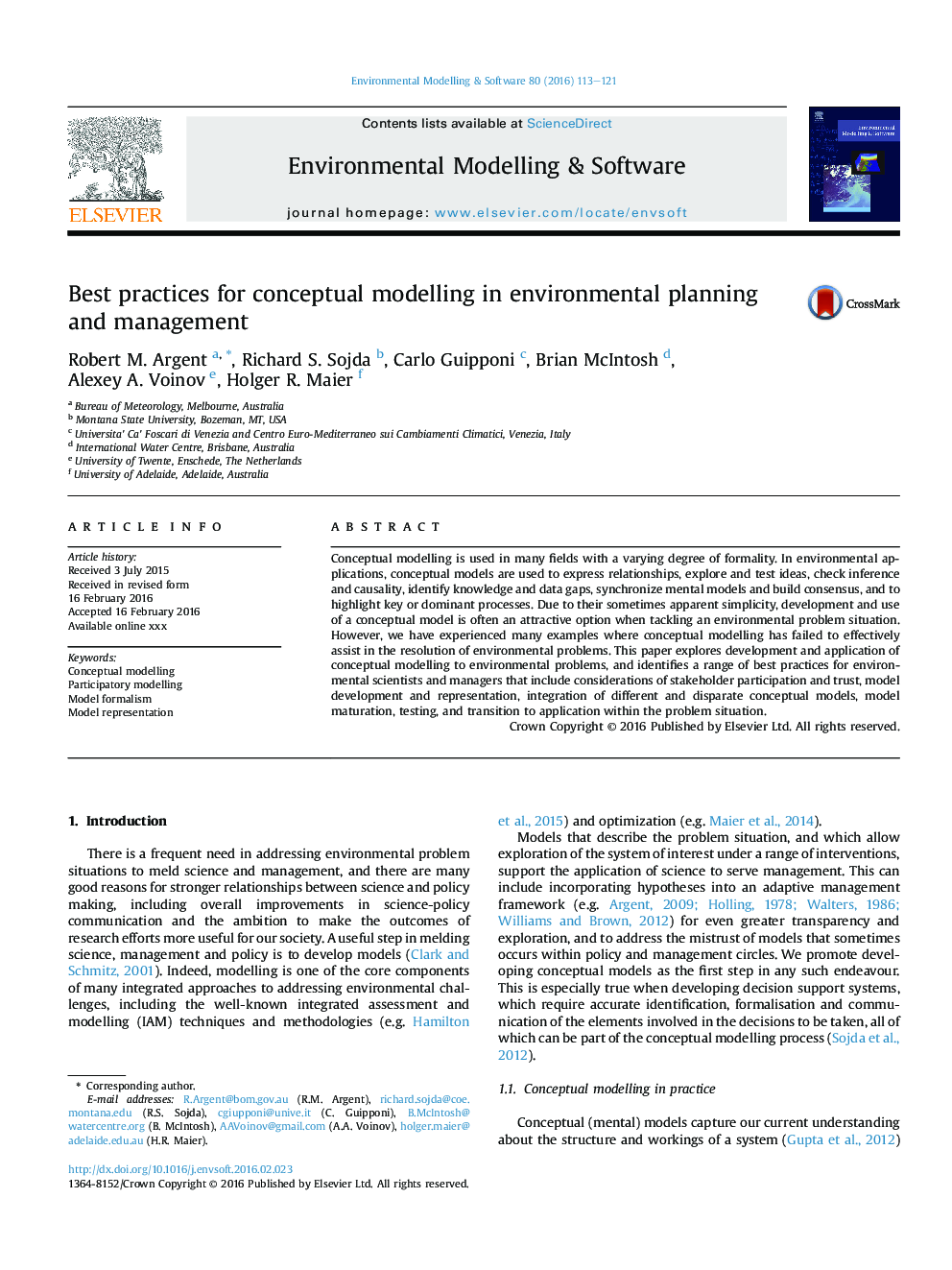| Article ID | Journal | Published Year | Pages | File Type |
|---|---|---|---|---|
| 6962509 | Environmental Modelling & Software | 2016 | 9 Pages |
Abstract
Conceptual modelling is used in many fields with a varying degree of formality. In environmental applications, conceptual models are used to express relationships, explore and test ideas, check inference and causality, identify knowledge and data gaps, synchronize mental models and build consensus, and to highlight key or dominant processes. Due to their sometimes apparent simplicity, development and use of a conceptual model is often an attractive option when tackling an environmental problem situation. However, we have experienced many examples where conceptual modelling has failed to effectively assist in the resolution of environmental problems. This paper explores development and application of conceptual modelling to environmental problems, and identifies a range of best practices for environmental scientists and managers that include considerations of stakeholder participation and trust, model development and representation, integration of different and disparate conceptual models, model maturation, testing, and transition to application within the problem situation.
Related Topics
Physical Sciences and Engineering
Computer Science
Software
Authors
Robert M. Argent, Richard S. Sojda, Carlo Giupponi, Brian McIntosh, Alexey A. Voinov, Holger R. Maier,
